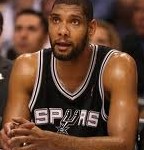 Even before a preposterous third and fourth quarter run, the Miami Heat had already gotten back into a great position in its NBA Finals series against the San Antonio Spurs. Through the changes and adjustments made by the Heat during the first three quarters of Game 2, they had already erased the bad mistakes and trends that ended up haunting them in Game 1.
Even before a preposterous third and fourth quarter run, the Miami Heat had already gotten back into a great position in its NBA Finals series against the San Antonio Spurs. Through the changes and adjustments made by the Heat during the first three quarters of Game 2, they had already erased the bad mistakes and trends that ended up haunting them in Game 1.
Sure, the result was a 103-84 blowout win for Miami over San Antonio, but margin of victory isn’t really important in the larger picture of this series. What is important going forward are the changes that occurred in this game, which are outlined below:
Better interior defense- An obvious way to win a game is to allow fewer layups and two-point baskets. Miami’s toughness and pressure inside really got to the Spurs, and it affected San Antonio’s overall field goal percentage. According to ESPN Stats & Info, San Antonio shot an abysmal 11-for-24 (46 percent) from inside five feet in Game 2. Prior to the Finals, the Spurs shot 63 percent on those shots according to ESPN. Take a look at how Miami improved its interior defense in Game 2, and how that made an impact on the game.
| Interior Defense | 2-point FG % | Points In Paint | PIP Dif |
| Game 1 | 45.9 | 40 | -6 |
| Game 2 | 37.9 | 38 | 8 |

San Antonio was down a full eight percent in its shooting percentage on two-point baskets, and saw a 14-point swing going Miami’s way in points-in-the-paint differential.
“In the second half they just run us over,” Manu Ginobili said after the game. “We didn’t move the ball at all. Their pressure really got us on our heels.” And that pressure manifested itself into turnovers.
Turnovers, turnovers, turnovers- San Antonio was at its very best last Thursday night, committing just four turnovers and playing with pristine discipline in its Game 1 win. The tables truly turned on Sunday, with the Spurs committing 17 turnovers to Miami’s six, and the Heat scoring 19 points off those turnovers to the Spurs’ two.
“We didn’t play well. We didn’t shoot well. I know I played awfully,” Duncan said. “Whatever it may be, they responded better than us.” Defensive pressure from Miami was a major reason why Duncan was so very frustrated after the game. “We were just a little bit more active today,” Chris Bosh said. “We really just made an emphasis to continue to try to corral them.”
Finding the right lineup- Sheridan Hoops colleague AJ Mitnick pointed out during the game, even before Miami’s big run, how well the Heat lineup of Mario Chalmers, Ray Allen, Mike Miller, LeBron James and Chris Andersen was playing. James playing as the power forward was a huge difference in the game, even if he didn’t shoot well (more on that in a minute) and Erik Spoeslstra found (and rode) his five-man group to a momentum-shifting win. So it should come as no surprise that those five players ended up with the best plus-minus ratings in the game.
 Mario Chalmers and the pick-and-roll- When Mario Chalmers has really good games, it has translated to great future success for Miami in the past. His 25-point performance in Game 3 of last year’s Finals comes to mind. It was the most important game in the series and the Heat rolled to the title after that. Could Sunday’s 19-point effort translate to another Miami championship? Time will tell, of course, but James was certainly appreciative.
Mario Chalmers and the pick-and-roll- When Mario Chalmers has really good games, it has translated to great future success for Miami in the past. His 25-point performance in Game 3 of last year’s Finals comes to mind. It was the most important game in the series and the Heat rolled to the title after that. Could Sunday’s 19-point effort translate to another Miami championship? Time will tell, of course, but James was certainly appreciative.
“Honestly, for me, when I was struggling offensively, my teammates continued to keep it in range,” James said. “So I think Rio more than anybody kept us aggressive, him getting into the paint, him getting those and-ones and making a couple of 3s.”
One more big change Spoelstra implemented for Game 2 was Chalmers and James running the pick-and-roll together, with great success. Jeff Van Gundy pointed this out at least a few times during the ABC broadcast, making the great point that it’s hard to shift your defense to the “roll” guy when LeBron James is setting the screen. That’s another huge benefit of James playing power forward, as Mitnick said.
The Chalmers and James P&R pair were 7-for-9 shooting with 18 points in Game 2, after only shooting it four times with that duo in Game 1, according to ESPN Stats & Info. And the kicker? Sixteen of those 18 points were scored during that 33-5 run, but Miami gained a major advantage even before that by making the tactical decision to run more sets in that way.
Limiting Parker- As good as Tim Duncan is, Tony Parker is the biggest key for the Spurs in this series. He was sensational in Game 1, but was limited to 5-for-14 shooting on Sunday with five turnovers and a disastrous -27 while on the floor. A concerted effort was made to prevent Parker from dictating the pace and flow of the game, and it worked. For Miami to win this series, limiting Parker may be the biggest factor of them all.
Shlomo Sprung loves advanced statistics and the way they explain what happens on the court. He is also the web editor of the Brooklyn Daily Eagle. A 2011 graduate of Columbia University’s Journalism School, he has previously worked for the New York Knicks, The Sporting News, Business Insider and other publications. His website is SprungOnSports.com. You can follow him on Twitter.